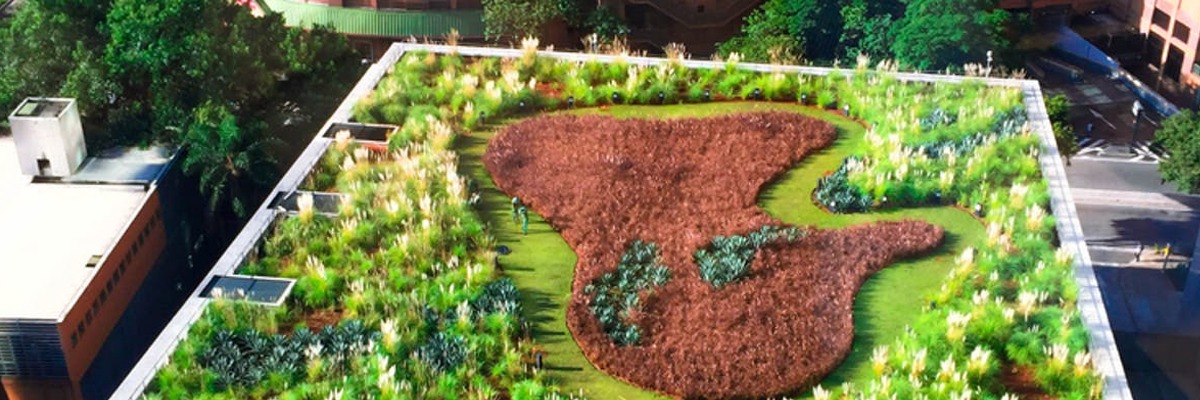Anne Fitchett of The Conversation writes:
Green roofs are usually installed on flat roofs with vegetation planted in a growing medium on top of waterproofing, root barrier and cuspate sheeting. The sheeting retains moisture in between rainfall events or manual watering.
Research suggests that these roofs have a number of advantages. These include rainfall management by absorbing much of the rainwater for vegetation growth and the enhancement of biodiversity. They’re also a social amenity as a visual relief to the dominant concrete surfaces and some studies suggest there are psychological benefits for people overlooking such roofs. Green roofs are also credited with attenuating extreme temperatures by keeping the rooms below the roof cool in summer and warm in winter.
An exploration of green roofs for indoor and exterior temperature regulation in the South African interior – Environment, Development and Sustainability.
We set out to study what benefits green roofs might bring to Johannesburg, a city in South Africa’s interior. There are a few buildings with green roofs in the inner city, but these are not common. Johannesburg’s climate – with high day time temperatures in summer and winter, as well as a distinctly seasonal summer rainfall – has not been previously researched to see whether its buildings might benefit from green roofs.
Exterior temperatures for the green roof closely matched ambient temperatures, suggesting that this roof type would help in minimising the Urban Heat Island effect. The soil roof returned the highest minimum temperatures, attributed to the dark colour of the soil that absorbs heat during the day. This roof gave the best thermal comfort levels at night; however, this roofing solution is not recommended since the exterior maximum temperatures were considerably higher than the ambient temperature.
Read more: How buildings in Johannesburg could benefit from green roofs
 Greenroofs.comConnecting the Planet + Living Architecture
Greenroofs.comConnecting the Planet + Living Architecture






